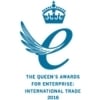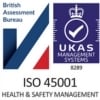If you need to make a component with complex parts, gravity die casting is often the chosen process. Frequently seen in industrial applications for defence and medical sectors, gravity die casting has a host of benefits – but what exactly are these, and how does the method work?
Gravity die castings are produced by pouring molten metal into permanent cast-iron or steel moulds.
The only force which fills the mould cavity is gravity; so, by tilting the die, the fill can be controlled.
This process produces what is known as ‘chill castings’, where solidification is promoted in a specific portion of the metal casting mould.
What are the advantages of gravity die casting?
Gravity die casting employs cast iron or steel moulds which allow aluminium and zinc castings to be produced more accurately and cheaply than with sand casting, with better surface finish, and better mechanical properties.
Tooling costs of gravity casting are a fraction of those needed for pressure die casting, while rapid chilling provides excellent mechanical properties. In addition, non-turbulent filling ensures production of heat treatable gravity castings with minimal porosity.
Why choose MRT for your gravity die casting needs?
By continuously investing in the latest technology and training, MRT have optimised the productivity of die casting processes and can offer you:
- Shortened lead times
- Lower costs
- Increased production rates
- Improved consistency.
MRT employ a range of hydraulic gravity die casting machines, which are microprocessor controlled. This allows movements of the die to be mechanised, such as tilt pouring, to dramatically increase precision.
In addition, MRT’s facilities for producing sand cores allow for simple casting of complex internal shapes, making even your most intricate casting ideas a possibility.
Keen to find out more about how we can help you bring an idea to reality? Contact our experts today.









